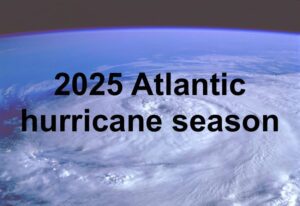Federal Budget targets resilience, insurance issues

The Federal Government’s first Budget since its May election has provided funding aimed at improving access to affordable insurance in areas prone to natural catastrophes and has formalised a commitment for annual spending of $200 million on resilience and mitigation.
The Budget provides $22.6 million that will be allocated over four years to help reduce the cost of insurance in disaster prone communities.
“This funding will be used to establish partnerships between government and the insurance sector. It will also improve consumer understanding of insurance products and leverage private-public initiatives to inform mitigation projects that reduce premiums for Australian households,” Budget documents say.
The Insurance Council of Australia (ICA) says a Hazards Insurance Partnership will be established to provide a forum for ongoing collaboration, while a national dataset on insurance affordability, underinsurance, and non-insurance issues will be created to help with policy decision making.
A mitigation solutions repository will hold proven and reliable measures than can be used to reduce risks associated with different perils, while scoping work will be undertaken to identify public-private partnership opportunities that reduce risk and put downward pressure on premiums.
The package also includes an intent to develop standard insurance definitions for key natural hazards.
ICA CEO Andrew Hall says that given the impacts of worsening extreme weather that are being felt all over the country, the community expects industry, governments, and stakeholders to work together.
“Importantly, [last night’s] announcement includes the creation of a mechanism to allow that to happen through the Hazards Insurance Partnership,” he said.
“There is much detail to work out and we look forward to working collaboratively with both the federal and state governments on this very strong start to solving a long-term problem.”
The previously announced $200 million annual resilience spending for five years, made through the Disaster Ready Fund, will support projects such as levees, sea walls, cyclone shelters, evacuation centres and fire breaks.
The Budget papers show that $30.4 million is allocated through the Disaster Ready Fund this financial year, with the $200 million a year commitment commencing from next financial year.
RACQ Principal Economic and Affordability Specialist Ian Jeffreys welcomed the funding but said the timeframe is too slow.
“Queenslanders will have to endure at least two more disaster seasons before the funding brings real results,” Dr Jeffreys said.
“These funds should be spent this year to protect vulnerable Queensland communities from growing climate impacts.”
Budget emissions-related commitments include support for electric vehicles and solar power and transmission grid investments, while $42.6 million is allocated to restore the Climate Change Authority and an annual climate change statement will be delivered to Parliament.
The Actuaries Institute said the Budget measures set Australia on a solid path to achieving its global commitments on reducing emissions and help reduce the worst risks of a changing climate.
“We know that vulnerable Australians are especially exposed to these risks through, for example, the most affordable housing being in the most climate exposed areas,” CEO Elayne Grace said.
“The frequency of extreme weather events and natural disasters across the country in recent years highlights the need for collaborative and urgent action to improve resilience.”
The Government also announced a new national housing accord between governments investors and industry that has set an aspirational target of constructing 1 million new “well-located” homes over five years from mid 2024.
Treasurer Jim Chalmers says the economy is expected to grow 3.25% this financial year before slowing to 1.5% next year, while inflation is expected to peak at 7.75% later this year, before moderating over time to 3.5% and returning to the Reserve Bank’s target range in 2024/25.





